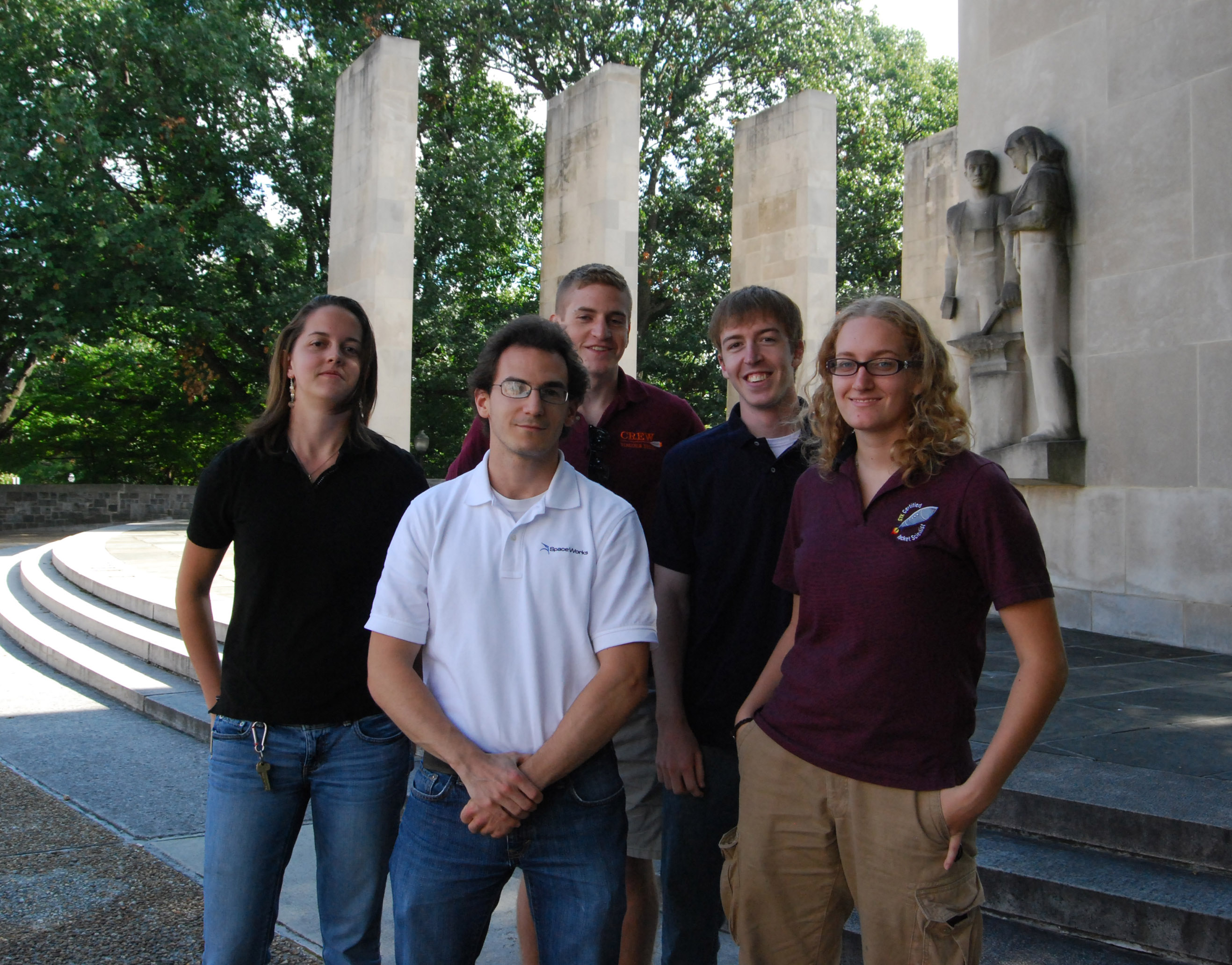Aerospace engineering student team wins space vehicle design contest

A student team from Virginia Tech’s Department of Aerospace and Ocean Engineering, part of the College of Engineering, has won first place in the American Institute of Aeronautics and Astronautics Foundation’s 2011–2012 Undergraduate Team Space Transportation Design Competition.
Representatives of the team presented their design at the institute’s September SPACE 2012 Conference & Exposition in Pasadena, Calif. The contest required entrants to design, and produce a business plan for a commercial Earth-to-orbit passenger vehicle. Among the tasks: The theoretical vehicle should take paying customers from Earth to orbit and back for a variety of research and tourism purposes.
Winning team members, all undergraduates in the aerospace engineering when the project began in 2011 are: Nicole Heersema of Mountainside, N.J., now a master’s student; Tommy Hertz of Fairfax, Va., and now graduated and working at BIT Systems; Tom Kasmer of Belmont, N.C., now a master’s student; Maria Rye of Oakton, Va., now a doctoral student; Matt Shepherd of Annandale, Va., now a master’s student; Matt Smith of Virginia Beach, Va., now a master’s student working as a researcher at NASA Langley in Hampton, Va.; Bryan Undercoffer of Lexington, Va., now a senior; and Greg Wheeler of Chesapeake, Va., now recently completed U.S. Naval Officer Candidate School.
Kevin Shinpaugh, an adjunct faculty member of aerospace and ocean engineering, served as the team’s faculty advisor.
The team also won a cash award of $2,500 from the foundation, which offers scholarships, classroom grants, design competitions, and student conferences from kindergarten through the university education level, thereby improving scientific literacy and advancing the arts and sciences of aerospace.
For the competition, students designed a full transportation system, including a launcher with a rocket, aircraft, or other propulsive element and a manned transport vehicle, capable of delivering 1,000 paying customers to low Earth orbit per year, said student team leader Kasmer.
Their winning design vehicle was named “MAGNETO,” short for MAGNetic Earth-To-Orbit, and a homage to the popular metal-controlling fictional character of the same name appearing in “X-Men” comic books, graphic novels, and series of recent Hollywood movies.
The system was to be operated commercially, meaning that the team was required to put together a business plan as well as an engineering design. MAGNETO consisted of an expendable hydrogen-oxygen fueled rocket stage combined with a manned lifting body upper stage which used the same fuels, and was more box-like in shape and deign than a traditional spacecraft’s roundish design, said Kasmer.
“Our design carried 10 passengers with two crew members,” he added. “We selected this passenger complement using a multidisciplinary design environment called ModelCenter, which enables different analysis tools to be combined in a single loop.”
Kasmer said his team though various technical and cost-estimating codes determined that 10 passengers per flight would impose the lowest combination of development, operations, and manufacturing costs throughout a 20-year period.
“The most difficult part about the competition was teaching ourselves how to perform tasks which were required for the competition, but not taught during the aerospace curriculum,” said Kasmer. “None of us knew much of anything about business and finance, heat shields, or linear motors before last semester. As team leader, I was really proud of how hard everyone worked to fill in these knowledge gaps and produce an impressive product.”
The American Institute of Aeronautics and Astronautics, according to its website, is the world’s largest technical society dedicated to the global aerospace profession and touts more than 35,000 individual members worldwide, and 90 corporate members. It brings together industry, academia, and government to advance engineering and science in aviation, space, and defense.




